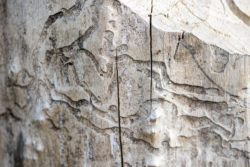Every year, termites cause damage estimated in the billions of dollars. These pests, sometimes known as “silent killers,” consume wood from the inside out and can live in your home for years without being noticed. The type of termite you have will dictate what termite treatment you use. There are three major types of termites, including drywood termites, dampwood termites, and subterranean termites.
An annual termite inspection is a crucial step in protecting your house from these pests. Once a year, a termite technician will visit your home and check the inside and outside for signs of termites. Using concrete for foundations, repairing leaks, maintaining dry soil around the house, and ensuring landscaping doesn’t contact the foundations are all helpful measures to take against termites.
In spite of our best efforts, termites may penetrate our home on occasion. Once termites have invaded a home, only specialized treatments can eradicate the problem forever. It’s important to identify the species of termite you’re dealing with before deciding on a treatment strategy. Liquid soil treatments, bait stations, and sprays/foams are the three most prevalent forms of treatment.
The time it takes for a termite treatment to be effective and the length of time a treatment lasts are major concerns for any homeowner when considering types of termite treatments.
As a protective measure, liquid-soil treatments can be applied to the soil surrounding the foundation of your house. Liquid termiticide is poured into a trench that has been dug around the perimeter. Once applied, the trench can be refilled. Termites will walk through the termiticide on their way from your house to the colony. The effects of these treatments may be felt for up to five years. Treatments using liquid soil are more effective than bait stations, with most colonies being eradicated in as little as three months.
Termites can also be controlled by placing bait stations around the perimeter of your property. Because the termites must first locate the bait, then transport it back to the colony, and wait for all members to consume it, these treatments take longer to work than liquid-soil. After a while, the entire colony will be eradicated, including the queen. It’s important to check on bait stations frequently and replenish supplies as needed. Eliminating a termite colony with bait stations can take up to six months.
Sprays and foams can be used on both preexisting wooden structures and brand new builds to protect them from termite damage. Injectable solutions are also an effective method of treating drywood termites. By spraying the solution directly into the wood, it eliminates any existing termites and penetrates deep into the board to prevent further infestations. Within a day or two of treatment, termites typically begin to die out. But the treatment may never make it to the queen if it takes too long to get to the rest of the population.
Termites are a common source of stress for property owners. Contact a pest control company for a comprehensive inspection and a customized termite control plan if you suspect you have a problem with termites or if you just want to take preventative measures.



